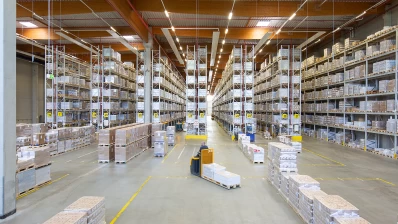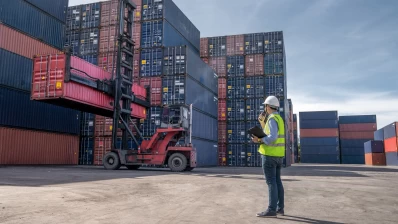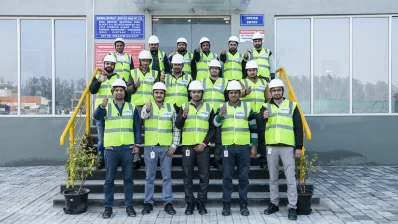Optimize Your Storage: Cutting-Edge Warehouse Solutions for Modern Businesses
1. The Importance of Efficient Warehouse Management
Efficient warehouse management is at the heart of successful businesses handling physical products. As demand for fast, accurate deliveries grows, so does the need to rethink warehouse practices. Poor management can lead to lost stock, delayed shipments, and higher operational costs.
By leveraging modern solutions for warehouses, businesses can optimise their storage and overcome these challenges. A well-organised warehouse helps businesses to:
- Cut operational costs by maximizing space.
- Speed up order fulfillment.
- Keep accurate inventory records.
- Offer quicker deliveries and fewer stockouts.
With these objectives in mind, adopting the latest warehouse technologies and strategies has become crucial for businesses.
2. Advanced Warehouse Technologies for Improved Efficiency
To stay competitive, businesses need to invest in the latest technologies that improve warehouse operations. These technologies provide valuable insights into inventory levels and workflows, ultimately boosting productivity. Here are some key innovations:
a) Automated Storage and Retrieval Systems (ASRS)
Automated Storage and Retrieval Systems (ASRS) use robotics and automation to store and retrieve goods efficiently. ASRS helps reduce human error, speed up storage, and maximise space. It also reduces the need for manual labour, allowing employees to focus on more critical tasks while making warehouses safer and more cost-effective.
b) Radio Frequency Identification (RFID)
RFID technology enables real-time tracking of inventory by tagging products with radio-frequency identification labels. This eliminates the need for manual stocktaking and increases inventory accuracy. RFID can be integrated with other warehouse solutions like Warehouse Management Systems (WMS) to provide real-time updates on inventory levels, improving overall control.
c) Cloud-Based Warehouse Management Systems (WMS)
Cloud-based WMS provide businesses with flexibility and real-time updates on inventory levels. Unlike traditional WMS, these cloud solutions can be accessed remotely and scale according to business needs. By using cloud-based systems, businesses improve inventory control, optimise storage, and enhance order fulfilment.
3. Maximising Warehouse Space with Innovative Storage Solutions
Warehouse space is limited, and optimising it is vital for efficient operations. A cluttered warehouse can slow down workflows and make it difficult to access inventory. Fortunately, modern storage solutions help maximise space and enhance operational efficiency:
a) Mezzanine Floors
Mezzanine floors are elevated platforms that create additional storage areas within a warehouse. These floors optimise vertical space, increasing overall storage capacity without the need for costly expansions. This solution is ideal for businesses that experience high inventory turnover or seasonal fluctuations.
b) Narrow Aisle Racking Systems
Narrow aisle racking systems reduce the width of aisles, enabling more space for storage racks. This system allows businesses to store more goods in the same area while speeding up picking and packing processes. It is particularly useful for businesses with high stock volumes or those looking to maximise warehouse space.
c) Dynamic Shelving Solutions
Dynamic shelving systems, such as adjustable and flow racking systems, help businesses store a wide variety of products efficiently. These systems allow businesses to adjust the shelves to accommodate different product sizes and ensure older stock is picked first. This improves stock rotation and reduces the risk of obsolete or expired inventory.
4. Enhancing Workforce Productivity in the Warehouse
Optimising storage and implementing advanced solutions are only part of the equation. To maximise efficiency, businesses must focus on enhancing workforce productivity. Here are some ways to improve warehouse workforce performance:
a) Worker Assistance Technologies
Wearable devices and augmented reality (AR) glasses can provide warehouse workers with real-time information about inventory locations, order details, and task instructions. These tools enable workers to perform tasks more efficiently and accurately, speeding up order picking and packing.
b) Task Automation
Automation of repetitive tasks such as inventory tracking, order picking, and label creation reduces human intervention and accelerates workflows. By automating these tasks, businesses can free up workers to focus on higher-value activities, improving overall productivity and operational efficiency.
5. Sustainability in Warehouse Operations
Sustainability is becoming increasingly important in warehouse operations. Businesses are looking for ways to reduce their environmental impact, and warehouses provide significant opportunities for improvement. Here’s how businesses can make their warehouse operations more sustainable:
a) Energy-Efficient Systems
Energy-efficient lighting, heating, and cooling systems help reduce energy consumption. For instance, compared to conventional bulbs, LED lighting uses less energy and lasts longer. Using natural light through skylights or transparent panels can also reduce reliance on artificial lighting, cutting energy costs and the carbon footprint.
b) Sustainable Packaging
Sustainable packaging solutions help reduce waste and minimise environmental impact. Using recyclable materials and optimising packaging sizes can significantly reduce waste in warehouse operations. Businesses can also adopt practices like reusing packaging materials and reducing excess packaging to improve sustainability.
6. Benefits
Adopting modern warehouse solutions offers businesses several key benefits, including:
Cost Reduction: Automated systems, energy-efficient equipment, and optimised storage all contribute to reducing operating costs. Efficient warehouse solutions help businesses cut expenses associated with labour, energy, and space.
Increased Efficiency: Advanced technologies and space optimisation strategies improve productivity, making order fulfilment faster and more accurate.
Improved Inventory Control: Real-time tracking, RFID technology, and cloud-based WMS provide accurate inventory data, reducing stock discrepancies and improving overall inventory management.
Enhanced Customer Experience: By speeding up order fulfilment and ensuring stock is readily available, businesses can improve delivery times and reduce errors, leading to better customer satisfaction.
Conclusion
In conclusion, modern warehouse solutions play a crucial role in optimising storage, improving operational efficiency, and supporting business growth. From cutting-edge technologies like automated storage systems and RFID tracking to innovative storage solutions and sustainability practices, businesses have a range of tools at their disposal to improve warehouse management.
By implementing these solutions, companies can streamline operations, reduce costs, and improve their overall customer experience. As the logistics industry continues to evolve, the role of efficient warehouse solutions will only become more significant in maintaining a competitive edge and ensuring long-term business success.
About Rhenus Logistics India:-
Our seven decades of experience in India give us the insight of the market terrain and the complexities you are unlikely to get with any other global player. From a supposed land of snake charmers to a country that is in the forefront of the world’s technology and innovations, Rhenus has invested in India's growth to be one of the largest economies in the world. With a high degree of focus on Health & Safety, Security, Environment and Quality (HSSEQ), people and information technology, we are your ideal logistics partner for integrated logistics solutions and services. You can move the world with Rhenus!
Important Facts about India
Ports of India
India is surrounded by water on three sides and is flanked by the Bay of Bengal to the East, the Arabian Sea to the West and the Indian Ocean to the South. There are 13 primary ports in India.
Road Transportation in India
Road transport has emerged as the dominant segment in India’s transportation sector, accounting for about 87 percent of passenger traffic and 60 percent of freight traffic movement in the country.
Main Industries
The major industries in the Indian economy are iron and steel, textiles, jute, sugar, cement, paper, petrochemicals, automobiles, information technology (IT) ad well as banking and insurance.
Airports of India
The Airports Authority of India (AAI) manages a total of 137 airports, which includes 103 domestic airports, 24 international airports and ten customs airports.













.jpg)
.jpg)
Comments
Post a Comment